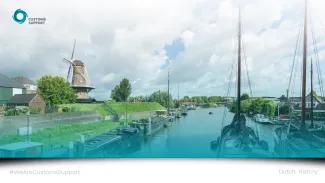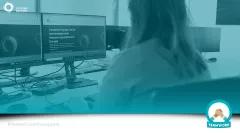Convooien and Licenten
The Dutch word for Customs is Douane. The origin of this word can be found in Latin, where the word doane means toll building.
The Customs Authority is the oldest governmental agency in the Netherlands. On 14 June 1597, a resolution by the Staten Generaal, which was what the Dutch government was called in the 16th century, launched the Dutch Customs Authority. At first, the agency was responsible for collecting convooi rights (taxes paid on the use of warships) and licentie rights (taxes paid for trading with enemy countries). You could say that we now know those taxes as import- and export duties.
The Customs Corps
In 1795 the Netherlands was under French rule, and the French installed the first customs agents at border posts along the Dutch border. At first, these customs agents were French. In 1806 the first import- and export duties were raised in the Netherlands. In 1809 the Dutch Customs Corps was founded. The Corps guarded the borders, hunted for smugglers, and handled import- and export duties.
The historical responsibility of the Customs Authority was collecting taxes. While collecting import- and export duties is still an essential part of what the Customs Authority does, its purpose has shifted much more towards protecting fair trade and guarding the borders against illegal goods and people entering or exiting the European Union along the Dutch border.
Leading Laboratory
In 1880 Dutch customs started two laboratories. They were needed to check the sugar level of products, so the customs authority knew how much excise to charge. These labs have developed into one of the leading customs labs in Europe. It analyses goods and advises the Customs Authority on what laws and duties apply.
Technological Capabilities
The Dutch Customs Authority uses advanced technical capabilities to safeguard the Dutch part of the border of the European Union. It has highly advanced scanners at sea and airports to check the contents of containers. It also uses drones. The Customs Authority is also making significant steps forward with digitalising customs processes. This makes it easier for importers and exporters and their customs brokers to declare goods and communicate seamlessly with the Customs Authority.
Congratulations!
We congratulate the Dutch Customs Authority on its 425-year existence. We have been around for the last 23 years and look forward to working together for many more years.














